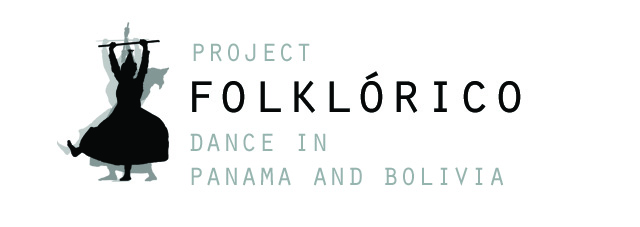
Folklórico in Bolivia
The folkloric dances of Bolivia comprise a diverse repertory of movements, rhythms, and dynamics. In performance, each grouping of dances is distinguished by specific characteristics including choreography, theme, and costuming. Both amateurs and professionals, men and women, children and adults immerse themselves in learning and performing the dances in a variety of venues. In preparation for annual festivals and parades, social groups known as fraternidades (fraternities) will gather to practice their signature dance throughout the year. One of the most popular dances is the Caporales which commemorates the character of the Caporal or captain in the Afro-Bolivian tradition of La Saya. Men attired in boots and chaps perform stamping rhythms while women generally wear mini-skirts and platform heels. Women are also known to dance the male roles in the Caporales. Groups which are often very large in number may represent academic units, neighborhoods, or professions. In addition to such social groups dedicating themselves to only one dance, there are numerous folkloric companies with developed repertoires choreographed for the concert stage.
Perhaps the most significant company is the Ballet Folklórico Nacional de Bolivia (National Folkloric Ballet of Bolivia) founded in 1975 by Manuel Acosta. With each of its full-scale performances, the company performs a diverse program of colorful dances representing the various “departments” or provinces of the country. Acosta will often open the show with a commemoration of the Inca heritage of South America. Following this initial pageantry, the full company will break into a Cuadro Cochabambino or a grouping of dances representing the city of Cochabamba and its surrounding areas. Included in this section is the Cueca, the signature dance of courtship, which is practiced in numerous Latin American countries. Moving in the direction of Brazil, the Eastern part of the country or “Orient” is represented with polka rhythms, Taquiraris, and the celebration of Carnival.
The Chaco valley, bordering Argentina, is represented by powerful male dancing in the Chacarera where the zapateado or foot stamping is reminiscent of flamenco dancing. In the northern area of the province of Potosí, a tradition exists whereby men from rivaling communities gather to fight with the belief that any bloodshed will serve to fertilize the earth for an abundant harvest. The dance based on these encounters known as the Tinku contains sections of pantomimic fighting sandwiched among geometric floor patterns created by the constant running step of the men and women who perform it. Other dances in the repertory include an Aymara New Year celebration and a dance inspired by the indigenous tradition of the Tobas.
Work cited: Rhodes, Elizabeth. "Ballet Folklorico – the Origins of a Company." Texas Association for Health, Physical Education, Recreation and Dance. Corpus Cristi, TX. 30 Nov. 2001. Lecture-Demonstration.


